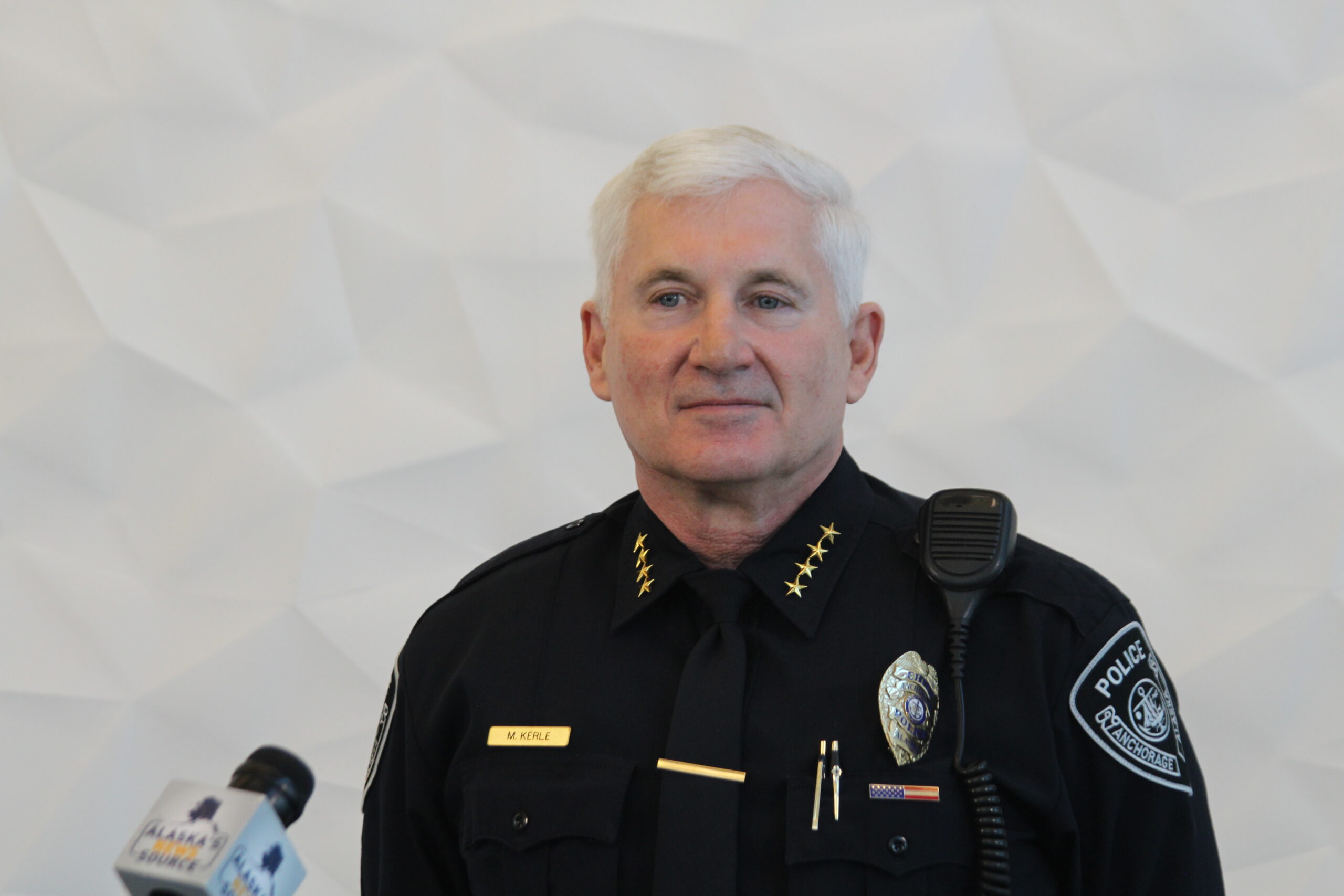
The Anchorage Police Department and the union representing its officers have come to an agreement on a body-worn camera policy following months of negotiations.
The tumultuous process has spanned three police chiefs, and led to mounting community frustration. The Alaska Black Caucus sued the city over the delays, saying it shouldn’t take more than two years to implement a policy. Voters approved a $1.8 million tax increase to purchase the cameras in spring 2021.
The police department and the union, the Anchorage Police Department Employees Association, had remained at odds over the camera policy. They announced Wednesday they’d finally reached an agreement.
“We appreciate all the hard work that went into the negotiations,” APD chief Michael Kerle said in a statement. “We look forward to working together as we implement the body-worn cameras.”
Before Wednesday, and as negotiations stalled, Kerle had announced that the department would move forward with getting cameras on officers, circumventing union approval. At the time, the department and the union opted for a third-party arbitrator to settle the dispute over cameras.
The new version of the policy that they’ve now agreed to includes a few changes.
The policy prohibits officers from reviewing or copying camera footage under specific circumstances, including when there’s use of deadly force, when there’s an in-custody death or when an APD employee is the subject of a criminal investigation. An addition to the policy includes another caveat: officers can’t review footage when they document use of weapons or “hard empty hand” tactics, which includes punching or kicking a suspect, in a police report. They also can’t review footage if a suspect has an injury that requires medical attention.
Whether officers could review footage ahead of writing reports was a sticking point for the union during contract negotiations.
In the Wednesday statement, police union president Darrell Evans said that getting cameras on officers remained a priority throughout the negotiation process.
“The Anchorage Police Department has always been and will continue to be one of the best trained and most professional police organizations in the country, and we believe the body-worn camera program will only continue to prove this,” he said.
The process for the release of camera footage remains the same as in prior drafts. Footage would be subject to public records requests, and can only be released after investigations have concluded, which can take months or years. A section of the policy allows for the police chief to release footage of incidents like police shootings before an investigation wraps.
Even with the agreement, the timeline for when the cameras will actually be on officers is still unknown.
APD officials say they’re finalizing a contract with the camera vendor. Once the contract is finished, officials say officers will begin training on how to use the cameras, and they will be implemented.
The Anchorage Police Department was among the last major police departments in Alaska to institute body-worn cameras for officers, with the state Department of Public Safety finalizing a policy for Alaska State Troopers earlier this year.
Wesley Early covers Anchorage life and city politics for Alaska Public Media. Reach him at wearly@alaskapublic.org and follow him on X at @wesley_early. Read more about Wesley here.





